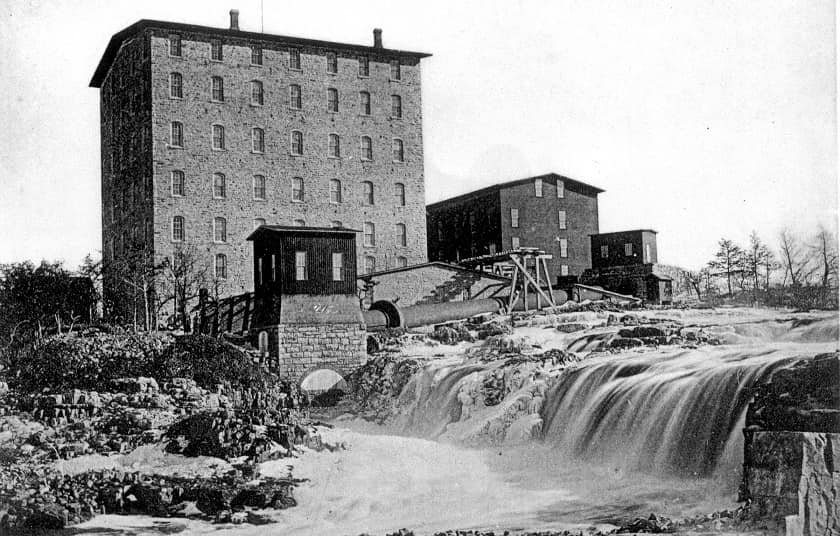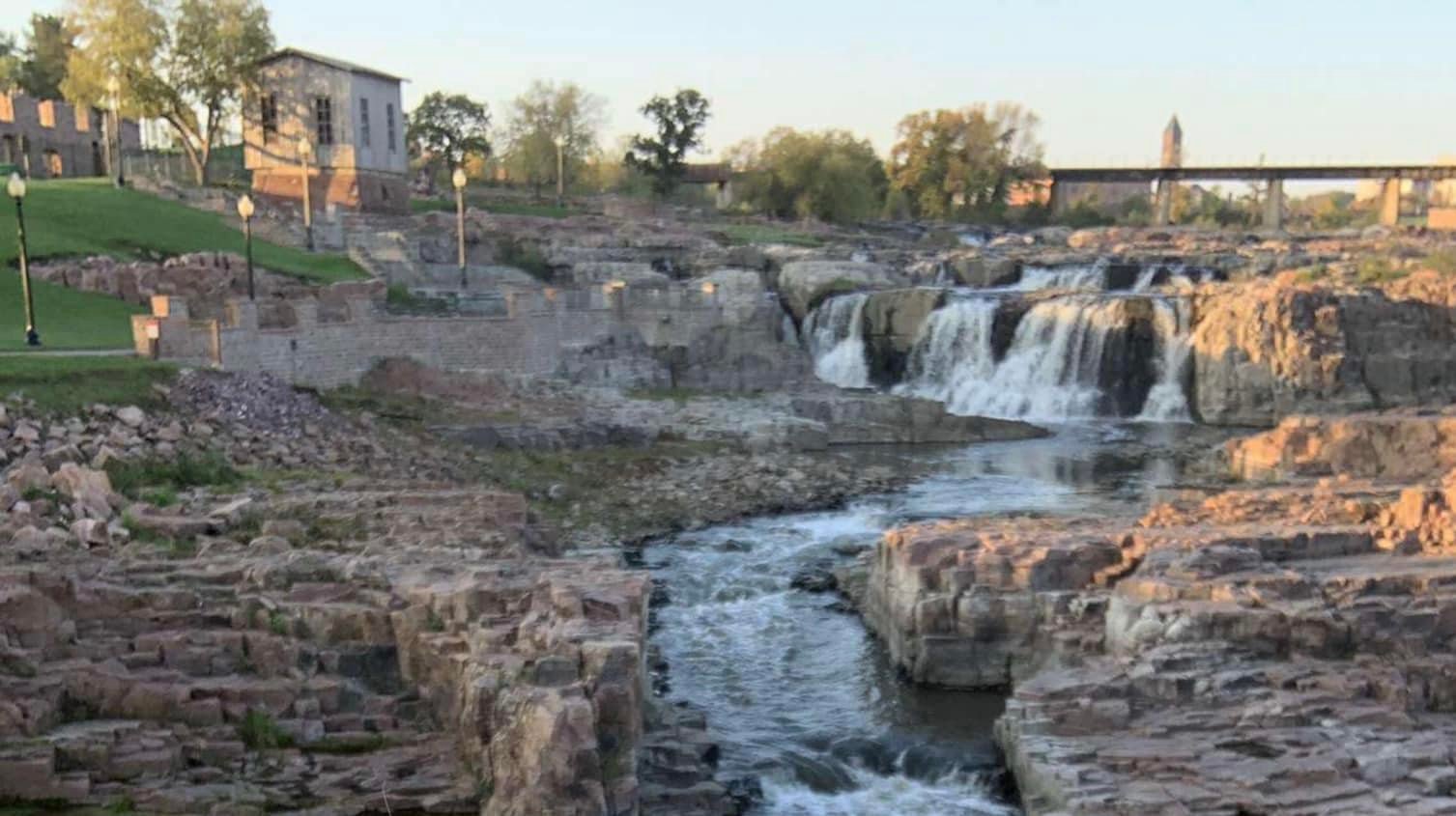A Look Back at The Sioux Empire:
Today we revisit the Queen Bee Mill, completed in 1881. Its purpose was to grind wheat with the power of the waterfall. However, the owners went bankrupt just 2 years later. Several other companies tried and failed as well. In 1956 a fire destroyed most of the mill. Only parts of the foundation remain today.
Photo Credit: Dr. Rick Odland, author of Sioux Falls: Images of America
Photo Credit: Falls Park Facebook Page
This week we celebrate one of the most iconic buildings in South Dakota…the Sioux Falls Arena. For more than 60 years, the Arena has housed momentous occasions, from state tournaments to graduations to circuses. When there was talk of tearing it down several years ago, I was one of many who couldn’t fathom it going away. I still remember when my sister took me to my first concert there (the Carpenters), attending state basketball and college games (Augustana’s games were played there until the Elmen Center came along). I remember making a half-court shot there during a high school regional game. (We lost, but still a fun memory.) Elvis even performed one of his final concerts there in 1977. So many memories from the Sioux Falls Arena. What’s your best memory from the Arena?
Photo Credit: Dr. Rick Odland, Sioux Falls: Images of America
Today we look back to Sioux Falls’ first hospitals. McKennan Hospital (now Avera Health) began with a large donation from Helen G. McKennan and was dedicated in 1911. Photo #2–The Sioux Falls Hospital (also called Sioux Falls Lutheran Hospital) was later moved to the Sioux Valley Hospital campus and was used as a nurse’s dormitory for many years. Photo #3–The Sioux Valley Hospital Association (now Sanford Health) was formed in 1925, and this building was completed in 1930.
*Photos and information courtesy of Dr. Rick Odland and his book, Sioux Falls: Images of America.*
Today we look back to 2005 when the Zip Feed tower refused to fall. The tallest occupiable structure in Sioux Falls at that time, at 202 feet, it received national news coverage when initial demolition attempts didn’t work. Cherapa Place now rests in that spot.
*Photo Credits: Sioux Falls: Images of America (Dr. Rick Odland, Author) and Cherapa Place*
Sliding back to an aerial view of 1940s Augustana College compared to Augustana University today. Note the farm at the top, which is close to where the Humanities building currently rests. Original structures that remain today include Old Main, the gymnasium, and the administration building.
*Photo Credit: Sioux Falls: Images of America (Dr. Rick Odland, Author)*
*Photo Credit: Augustana University Facebook page*
This week we slide back to the iconic building still standing at the corner of E 10th St and 1st Ave. The Rock Island Depot was built in 1886 and served as a depot until 1970. Since then the building housed several restaurants including After 5, a popular '80s hangout. The Great Outdoor Store now occupies the building.
*Photo #1-2 and Informational Credit to Dr. Rick Odland and his book Sioux Falls: Images of Modern America. Photo #3 by Sherry Knutson.*
Every week we will take a “then and now” look at iconic structures and areas of Sioux Falls and the surrounding areas. This week’s topic is the original Washington High School, now Washington Pavilion. Built in 1906, the high school was later named after our first president and remained a school until 1991, when the new WHS was built at Sixth St and Sycamore. The original high school was completely remodeled to become Washington Pavilion, an education/arts center.
*A big thank you to Dr. Rick Odland for allowing me to share photos and information from his books, Sioux Falls: Images of America and Sioux Falls: Images of Modern America. Photo credit to Washington Pavilion’s Facebook page.*
It’s Slide Back Sunday! This week we look back at the Old Courthouse Museum, which served as the Minnehaha Court House from its beginnings in 1890. Now a part of the Siouxland Heritage Museums, the restored quartzite building displays history exhibits on three floors. A must-see for visitors are the 16 murals in the hallways, painted between 1915-1917 by Norwegian immigrant Ole Running. He was paid $500 for his work.
*Photo Credit goes to Sioux Falls: Images of America, by Dr. Rick Odland.*
Today's Slide Back Sunday comes directly from Dr. Rick Odland's book, Sioux Falls: Images of Modern America...
Here, a sympathy march of over 300 students, ministers, and local members of the NAACP walk north on Main Avenue through Ninth St. The local sympathy march was one of many protests held nationwide in mourning of Rev. James Reeb. Reeb was a white American civil rights activist taking part in a protest in Selma, Alabama. After the protest, Reeb was beaten and died two days later on March 11, 1965. Rev. Reeb's death was pivotal in Pres. Lyndon B. Johnson drawing up and finally signing the Voting Rights Act of 1965.


















